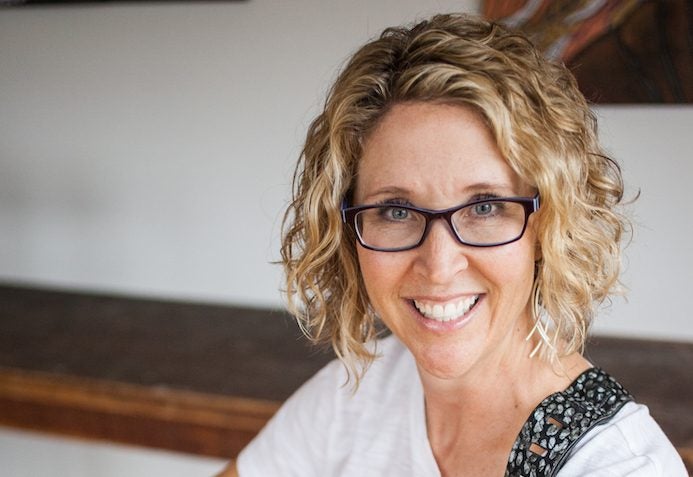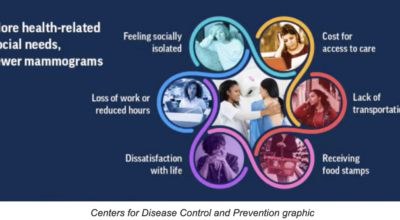Seeking Connection: If you use it, you won’t lose it
Published 9:48 am Monday, June 4, 2018

- Erin Smith is the owner of the OM place in Winchester, the author of “Sensible Wellness” and the online host of the OM channel. Follow her on Twitter @erinsmithauthor.
By Erin Smith
My daughter jokes my tombstone should read:
“What did I come in here for?”
“Where are my glasses?”
“What did I do with my phone?”
She has a point.
More and more, I find myself welcoming my yoga students to class by saying, “Hey … girl!” It’s not that I don’t recognize you or you’re unimportant. It’s that I’ve momentarily forgotten your name.
The other day, I told someone with complete sincerity I am 46 years old. I’m 44, y’all. And I actually had to count forward from 1973 just now to make sure that was correct.
Likewise, I recently was asked my phone number and automatically gave them the landline number from when I was a child.
I forget to water the plants, set the coffee and put the trash out all the time.
Sound familiar?
Some of this forgetfulness can be attributed to normal age-related decline. But an enormous amount of my absent-mindedness arises from a phenomenon called continuous partial attention, or CPA.
CPA describes how our brains process “never-ending” information. Basically, the brain has a pretty big job processing the normal sights, sounds, smells, tastes, feels and emotions of our day.
When we layer that with the sensory barrage of cell phones, laptops, smart watches and social media, we thrust the computer in our brain into overdrive.
Our brains can’t keep up with the stimulation, so it begins to “make room” for all the new info by discarding things we should remember, like where we parked the car.
But blanking on names and appointments isn’t a foregone conclusion. Our brain’s ability to change is known as neuroplasticity.
Science used to hold that the brain was immutable, and degenerated with age, leaving little room for change.
We now know the brain continues to form new cells via a process known as neurogenesis. Your brain’s storage capacity is considered virtually unlimited. It doesn’t get “used up” like gigabytes on your phone.
A piece of brain tissue the size of a grain of sand contains 100,000 neurons and 1 billion synapses, all communicating with each other.
Neuroplasticity is the brain’s potential to create neural pathways and reorganize itself according to how it is (or isn’t) being used.
Like a muscle, the areas of our brain used most often grow larger and stronger, while areas of the brain we don’t use as much atrophy. When you don’t use a skill, your brain undergoes a process called synaptic pruning, allowing the cells in that area to die off.
But when we use an area consistently, week after week, that brain area stays strong and efficient.
As the saying goes, neurons that fire together, wire together. When you use it, you won’t lose it.
So how do we do that?
The best way to ward-off age-related memory loss is by combining concentration and movement in endeavors like yoga.
Yoga is especially powerful for facilitating change because it combines mindfulness with contralateral movement, where opposite sides of the body are working in concert.
We do it unconsciously when we walk or climb stairs. The key is to do it in a mindful way that defies the brain’s expectations.
We never solely use just the right or left hemispheres of the brain for any activity; we are whole-brain creatures. That said, the right and left hemispheres approach the same task from different angles.
The right hemisphere of our brain is sensory, more present in the moment. It sees our world as a whole and loves drawing parallels between memories and new occurrences. It’s intuitive and subjective, longs to understand the world.
Our left hemisphere takes those moments and organizes them in a linear fashion. That big picture perception is broken down into manageable and analyzable bits of data that can be compared and evaluated. The left side is more logical, systematic and objective.
Each hemisphere has sensory and motor control of the opposite side of the body. Therefore, moving both sides of the body at once facilitates brain integration and improves memory.
Try the bird dog, a fabulous yoga pose that strengthens the core and the brain. Come to all fours in a tabletop position. Keep the low back pressing upward slightly to engage your core (imagine a cup of coffee resting on your back.) Now extend the right leg behind you, lifting it until it’s parallel to the floor. Point the toe and squeeze your butt cheek. Extend the left arm forward in the same way. Keep the neck neutral, looking down at the floor.
Still with me? Here comes the fun part. Now circle the lifted ankle and wrist to the left 10 times. Then switch and circle both to the right 10 times.
It’s harder than you thought, no? Did you completely rock it? Here’s the pièce de résistance. Try the bird dog again, but now circle the wrist to the left and the ankle to the right. It’s a sort of jacked-up version of the old “pat your belly and rub your head simultaneously” move. It’s even more beneficial to your brain because you’re still in a contralateral position.
Questions about the bird dog? Contact me at, um, wait a sec … let me go look up my email and I’ll get back to you.
Erin Smith is the owner of the OM place in Winchester, the author of “Sensible Wellness for Women” and the online host of a yoga and mindfulness channel for Eppic Films. Send her a shout out at erin@theOMplace.net or play along at www.theOMplaceChannel.com.





